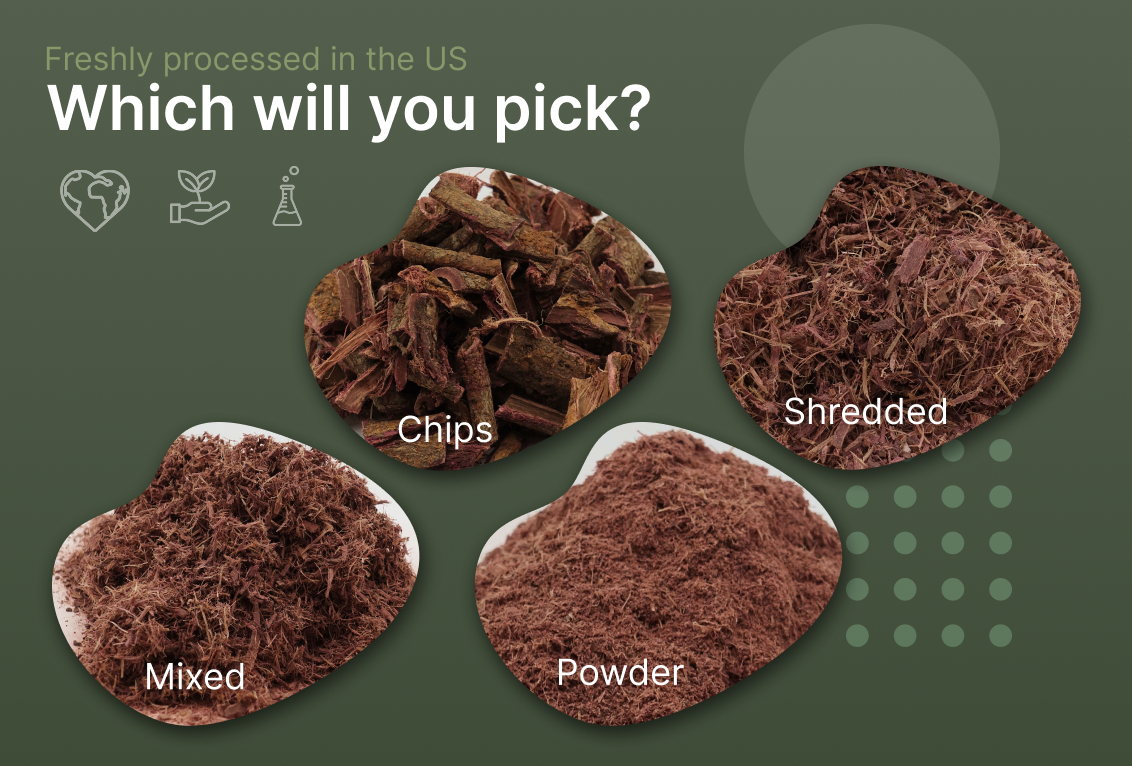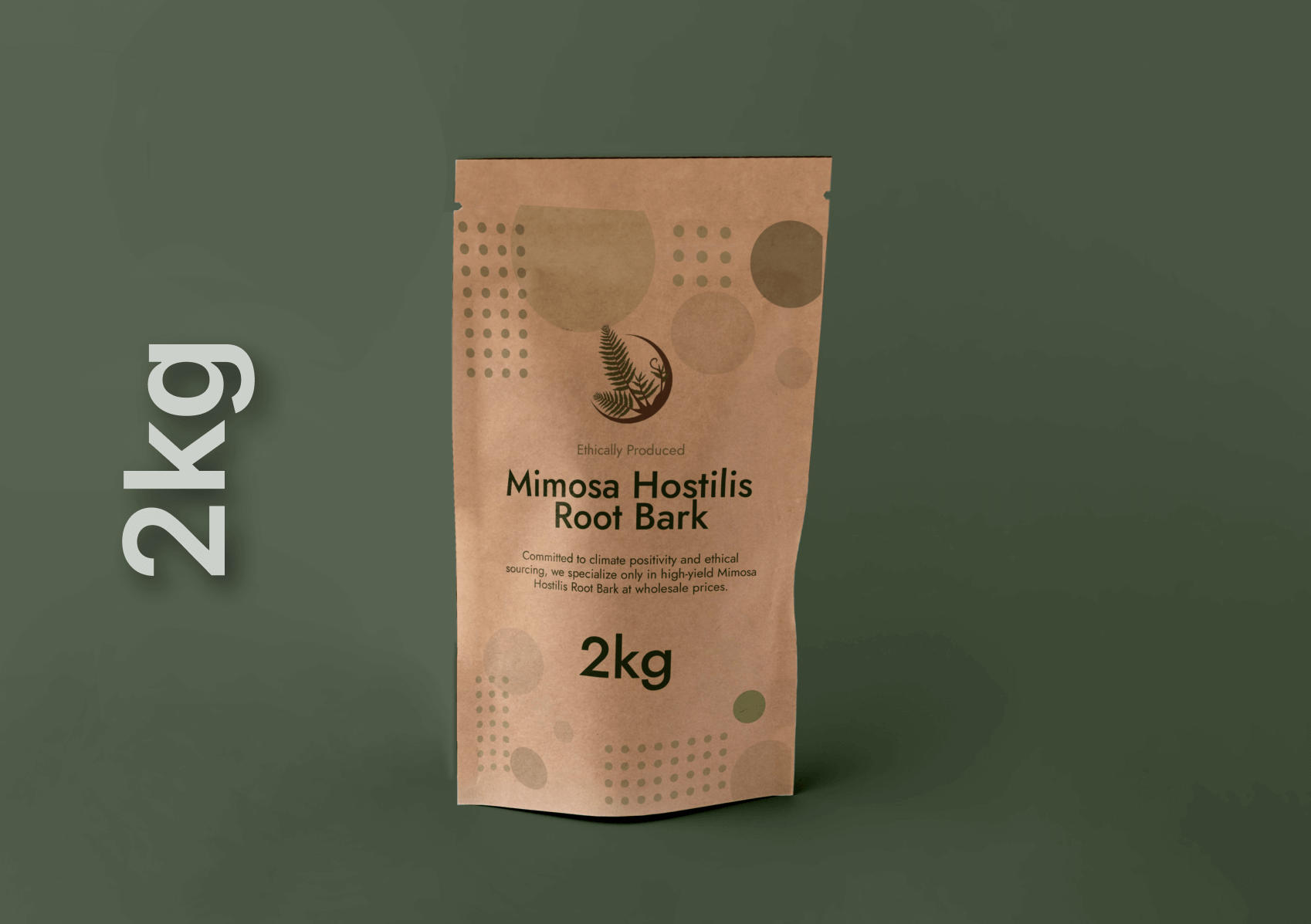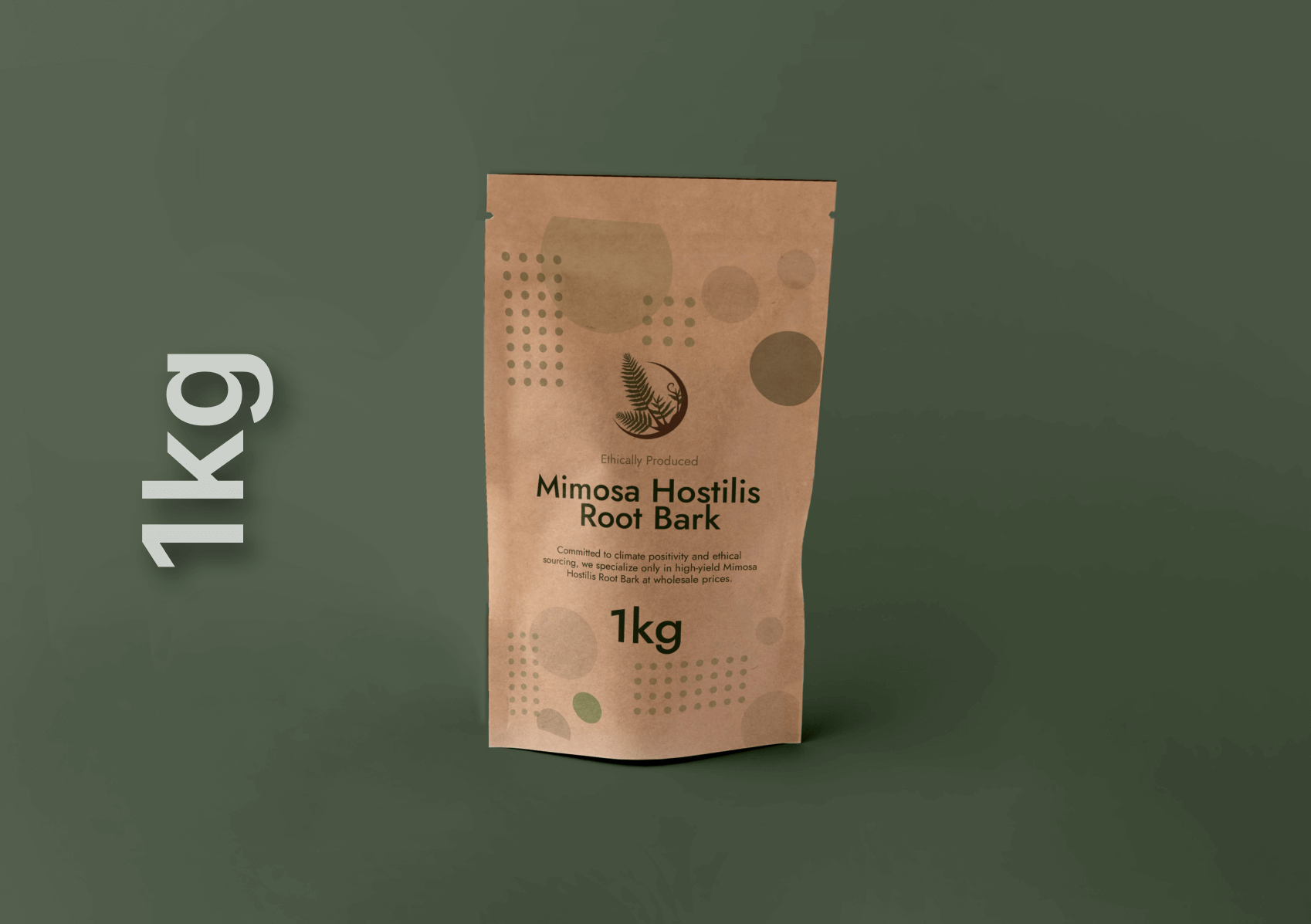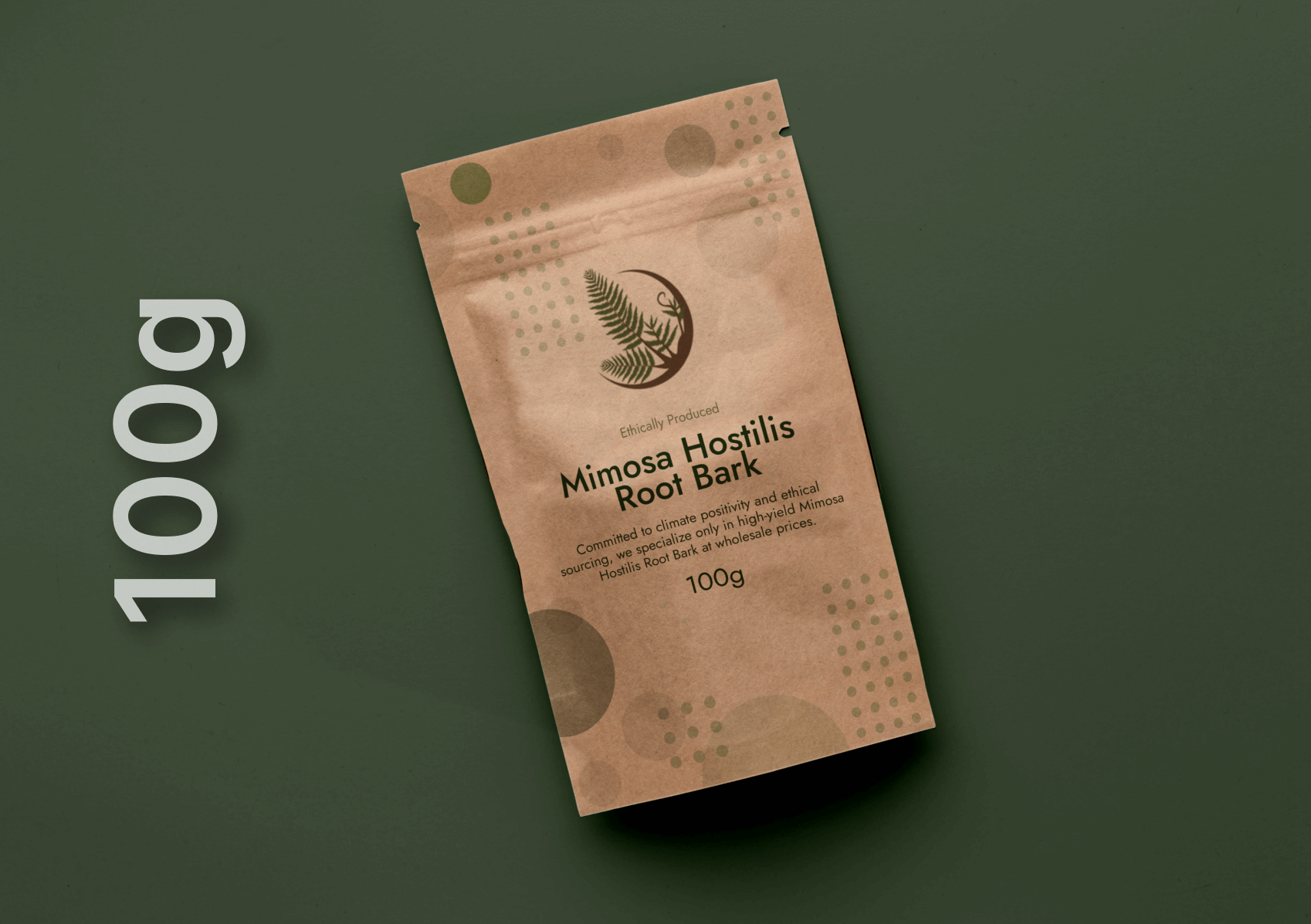Understanding Brazilian vs. Mexican Mimosa Hostilis: The Foundation
What Makes Origin Matter?
Mimosa Hostilis (Mimosa tenuiflora) grows naturally across different regions of Latin America, with Brazil and Mexico representing the two primary commercial sources. The geographic origin significantly impacts the bark’s chemical composition, physical characteristics, and practical applications.
Brazilian Mimosa Hostilis thrives in the Caatinga biome of northeastern Brazil, where harsh drought conditions and mineral-rich soils create unique growing environments. Mexican varieties flourish in similar semi-arid conditions across states like Chiapas, Oaxaca, and Guerrero.
These environmental differences produce distinct variations in alkaloid content, tannin levels, and bark density. Understanding these differences helps buyers make informed decisions based on their specific project requirements.
The Science Behind Regional Variations
Scientific analysis reveals notable differences between Brazilian and Mexican sources. Brazilian MHRB typically contains higher concentrations of tannins, making it superior for natural dyeing applications. The bark often displays deeper purple-red coloration and denser fiber structure.
Mexican varieties, traditionally known as Tepezcohuite, show different chemical profiles optimized for skincare applications. The bark tends to be lighter in color with higher concentrations of flavonoids and saponins beneficial for cosmetic preparations.
Laboratory studies indicate that Brazilian sources average 15-20% higher tannin content, while Mexican sources contain 25-30% more skin-beneficial compounds like lupeol and beta-sitosterol.
Harvesting and Processing Differences
Brazilian harvesting traditionally focuses on root bark extraction during specific seasonal periods when alkaloid concentrations peak. Local communities have developed sophisticated sustainable harvesting methods that allow tree recovery within 3-5 years.
Mexican harvesting emphasizes both root and stem bark collection, with processing techniques refined specifically for medicinal and cosmetic applications. The traditional preparation methods often include specific drying and grinding processes that preserve beneficial compounds.
Processing standards vary significantly between regions. Brazilian suppliers often focus on powder fineness and color consistency, while Mexican processors prioritize maintaining the full spectrum of active compounds for therapeutic use.
Market Availability and Pricing
Brazilian MHRB dominates the international market, representing approximately 70% of global supply. Established export networks and consistent quality control make Brazilian sources readily available through multiple suppliers.
Mexican MHRB commands premium pricing due to its reputation in traditional medicine and limited export infrastructure. Authentic Tepezcohuite often costs 30-50% more than Brazilian equivalents but offers unique properties for specific applications.
Current market data shows Brazilian MHRB averaging $15-25 per kilogram wholesale, while authentic Mexican sources range from $25-40 per kilogram depending on processing quality and certification.

The Current Landscape of Regional MHRB Markets
Brazilian Supply Chain Excellence
Brazil’s MHRB industry benefits from well-established supply chains connecting rural harvesters with international buyers. Major suppliers maintain direct relationships with indigenous and local communities, ensuring consistent quality and sustainable practices.
Brazilian suppliers typically offer better traceability, with many providing GPS coordinates of harvest locations and detailed processing documentation. This transparency appeals to buyers requiring certified organic or fair-trade products.
The infrastructure advantages include reliable shipping networks, established quality testing facilities, and English-speaking customer service teams familiar with international requirements.
Mexican Artisanal Excellence
Mexico’s MHRB market emphasizes traditional knowledge and artisanal processing methods passed down through generations. Many suppliers are indigenous cooperatives maintaining cultural connections to the plant’s traditional uses.
Mexican sources often provide superior product knowledge regarding traditional preparation methods and specific applications. Suppliers frequently offer guidance on optimal usage for skincare and therapeutic preparations.
The challenge lies in limited export infrastructure and language barriers that can complicate international transactions. However, the authentic cultural knowledge and specialized processing justify the additional effort for many buyers.
Quality Identification by Origin
Brazilian MHRB exhibits consistent deep purple-red coloration with fine, uniform powder texture when properly processed. High-quality Brazilian bark produces rich burgundy colors when mixed with water and maintains color stability over time.
Mexican MHRB often appears lighter with more varied coloration ranging from reddish-brown to purple. The powder texture may be coarser, reflecting different grinding techniques that preserve larger beneficial compounds.
Authentic Mexican Tepezcohuite should have a distinct earthy aroma with subtle sweet undertones. Brazilian varieties typically present stronger, more astringent scents reflecting higher tannin content.
Project-Specific Applications: Brazilian vs. Mexican MHRB
Natural Dyeing Applications
Brazilian MHRB excels in natural dyeing projects due to its superior tannin content and color fastness. The high tannin levels create stronger bonds with natural fibers, producing vibrant burgundy, purple, and pink shades that resist fading.
Professional textile artists consistently prefer Brazilian sources for large-scale dyeing projects. The predictable color results and consistent quality make production planning more reliable. A 1:1 ratio of bark to fabric weight typically produces deep, saturated colors.
Mexican MHRB can work for dyeing applications but requires different techniques and often produces lighter, more variable colors. The lower tannin content means longer processing times and potentially less permanent results on natural fibers.
For eco-printing and botanical contact dyeing, Brazilian MHRB provides clearer, more defined prints. The concentrated tannins create sharp color transfers that capture fine detail work.
Skincare and Cosmetic Formulations
Mexican MHRB dominates skincare applications due to its traditional use as Tepezcohuite and optimized compound profile. The higher concentrations of skin-beneficial compounds like lupeol, beta-sitosterol, and specific flavonoids make it superior for cosmetic preparations.
Clinical studies focusing on wound healing and skin regeneration typically use Mexican sources, reflecting the traditional knowledge base and specific chemical profile. The compounds present show enhanced bioavailability for topical applications.
Brazilian MHRB works in skincare applications but may require higher concentrations to achieve similar therapeutic effects. The focus on tannin content over other beneficial compounds makes it less optimal for cosmetic use.
For soap making, both origins work well, but Mexican sources provide better skin feel and moisturizing properties. Brazilian varieties contribute more color and astringent properties, which some formulations may require.
Research and Extraction Projects
Laboratory research projects benefit from understanding the specific compound profiles of each origin. Brazilian MHRB provides consistent baseline material for tannin extraction and analysis studies.
Pharmaceutical research focusing on skin therapeutics typically utilizes Mexican sources due to the established traditional use patterns and documented bioactive compounds. The cultural knowledge base provides valuable research direction.
Extraction efficiency varies by origin and target compounds. Brazilian sources yield higher percentages of tannins and related phenolic compounds. Mexican sources provide better yields of triterpenes and specific medicinal alkaloids.
Academic institutions often maintain relationships with suppliers from both origins to enable comparative studies and validate research findings across different genetic populations of the same species.
Traditional and Ceremonial Uses
Mexican MHRB maintains stronger connections to indigenous ceremonial traditions, particularly in Mayan and other indigenous cultures where Tepezcohuite holds sacred significance. Traditional preparation methods preserve the full spectrum of compounds.
Brazilian sources also have traditional uses among indigenous communities, but the export focus has shifted processing methods more toward commercial applications. Traditional knowledge remains available but may require specific supplier relationships.
Ceremonial preparations typically emphasize the complete plant spirit and traditional harvesting methods. Mexican suppliers more commonly maintain these traditional approaches in their processing and handling methods.
Cultural authenticity considerations often favor Mexican sources for ceremonial applications, while Brazilian sources work well for personal spiritual practices without specific cultural requirements.
Sustainability and Ethical Considerations
Brazilian suppliers generally offer better documentation of sustainable harvesting practices, with many participating in reforestation programs and community development initiatives. The larger scale operations can support more comprehensive sustainability programs.
Mexican suppliers often operate at smaller scales with direct community involvement, providing more direct benefit to indigenous harvesters. However, documentation and certification of sustainable practices may be less formal.
Fair trade certification is more readily available from Brazilian suppliers due to established export infrastructure and documentation systems. Mexican sources may provide superior community benefit but with less formal certification.
Environmental impact varies by specific supplier rather than origin country. Both regions face pressure from agricultural expansion and climate change, making supplier selection critical for sustainability.
Practical Selection Guidelines
Choose Brazilian MHRB for natural dyeing projects requiring consistent, vibrant colors and maximum tannin content. The reliable supply chain and quality consistency support large-scale or commercial applications.
Select Mexican MHRB for skincare formulations, traditional medicine preparations, or projects emphasizing cultural authenticity. The specialized compound profile and traditional knowledge base provide unique advantages.
Consider project scale when selecting origins. Brazilian sources better support large-volume requirements with consistent pricing and availability. Mexican sources work well for specialized, smaller-scale applications.
Budget considerations often favor Brazilian sources for cost-sensitive projects, while premium applications may justify the higher costs of authentic Mexican Tepezcohuite.
For research projects, using both origins provides broader data sets and validation opportunities. Many researchers maintain samples from multiple suppliers and origins for comparative work.
Future Trends and Recommendations
Market trends indicate growing demand for traceability and sustainable sourcing from both origins. Buyers increasingly request detailed provenance information and environmental impact documentation.
Brazilian suppliers are investing in organic certification and fair trade programs to meet international market demands. This trend will likely improve both quality consistency and social responsibility metrics.
Mexican suppliers are developing better export infrastructure and quality documentation systems. This evolution will improve availability while maintaining traditional knowledge and processing methods.
Climate change impacts both regions, making supplier diversification important for long-term project planning. Establishing relationships with reliable suppliers from both origins provides supply security.
Research into optimal applications for each origin continues, with new discoveries regularly refining best practice recommendations. Staying current with research helps optimize project outcomes and cost efficiency.
Conclusion
Choosing between Brazilian and Mexican Mimosa Hostilis depends primarily on your specific project requirements and priorities. Brazilian sources excel in natural dyeing applications, offering superior tannin content, consistent quality, and reliable supply chains at competitive prices. Mexican sources, particularly authentic Tepezcohuite, provide optimal compounds for skincare and therapeutic applications, along with traditional knowledge and cultural authenticity.
For natural dyeing projects, soap making focused on color, or large-scale commercial applications, Brazilian MHRB typically provides the best value and performance. The established export infrastructure and quality consistency make project planning more predictable.
Skincare formulations, traditional medicine preparations, therapeutic research, or projects emphasizing cultural connections benefit from Mexican sources. The specialized compound profile and traditional processing methods justify the premium pricing for these applications.
Successful sourcing requires identifying reputable suppliers regardless of origin. Look for suppliers offering detailed product information, sustainable harvesting documentation, and responsive customer service. Building relationships with suppliers from both origins provides flexibility and supply security for ongoing projects.
As both markets evolve, the distinctions may become less pronounced through improved processing techniques and standardization. However, the fundamental differences in growing environments and traditional knowledge bases will likely maintain the unique characteristics that make each origin optimal for specific applications.
Frequently Asked Questions
What is the difference between Brazilian and Mexican Mimosa Hostilis?
Which type of Mimosa Hostilis is better for natural dyeing?
Is there a price difference between Brazilian and Mexican Mimosa Hostilis?
Which Mimosa Hostilis should I choose for skincare and Tepezcohuite use?
How can I tell if my Mimosa Hostilis is from Brazil or Mexico?




